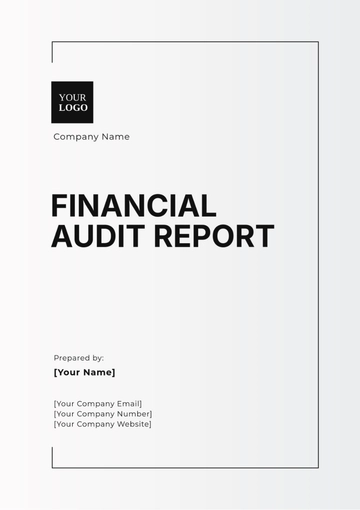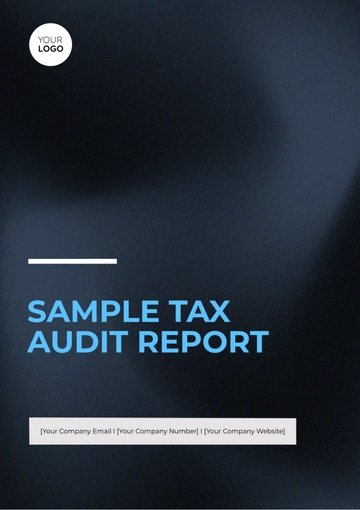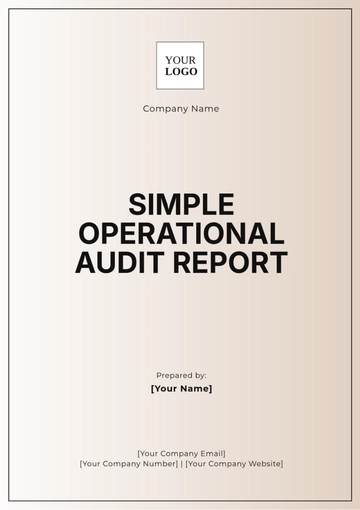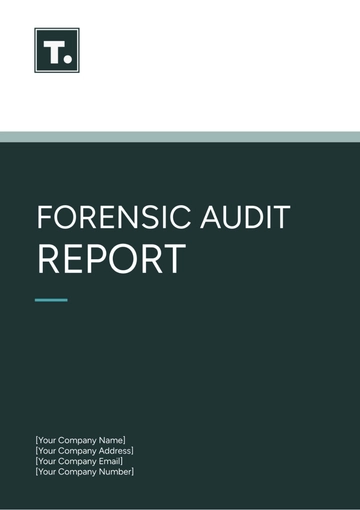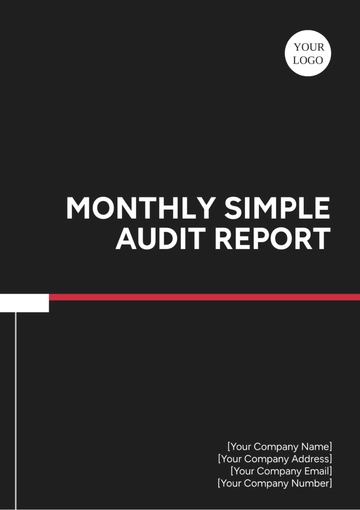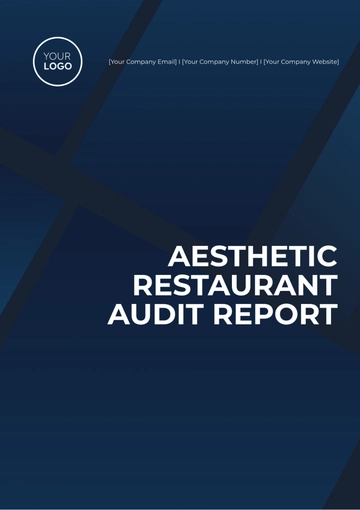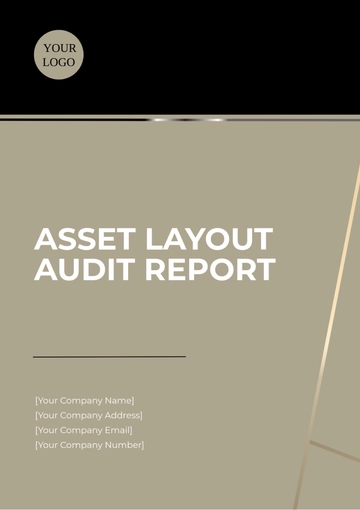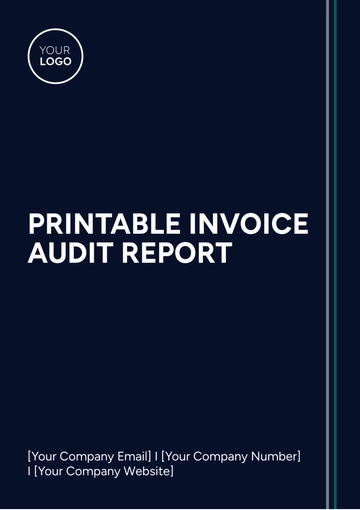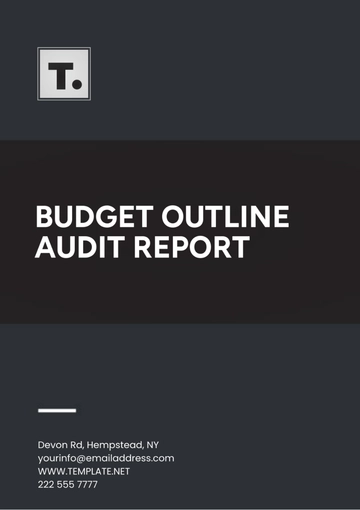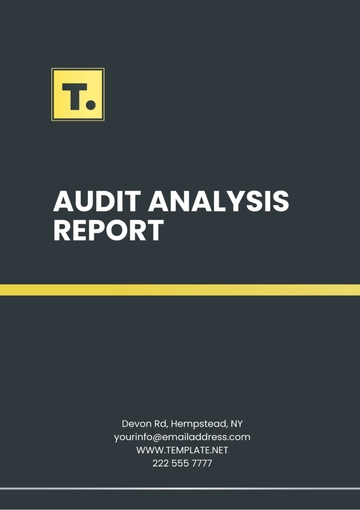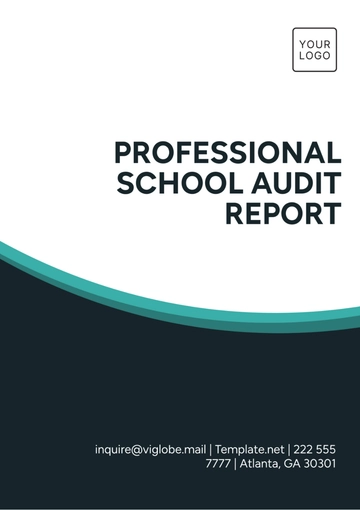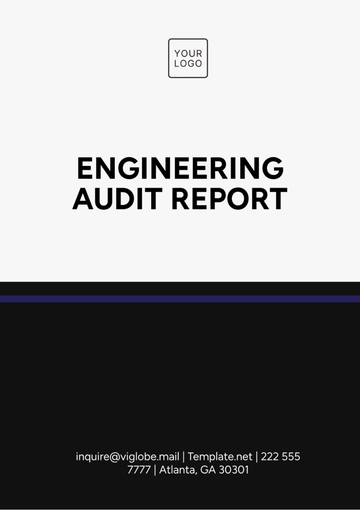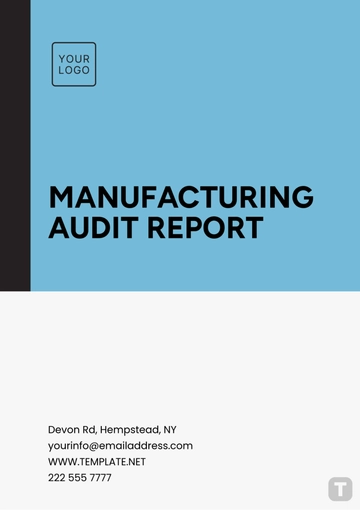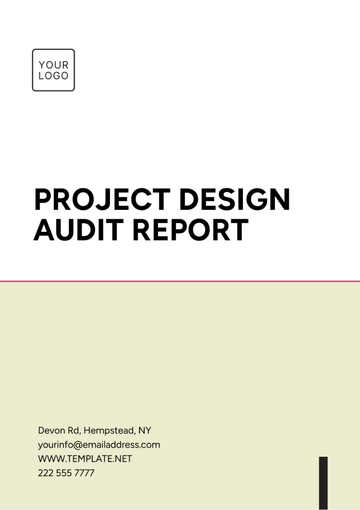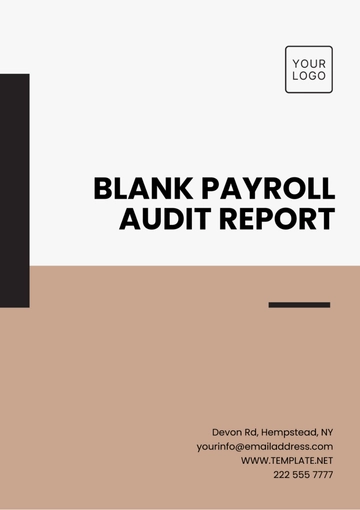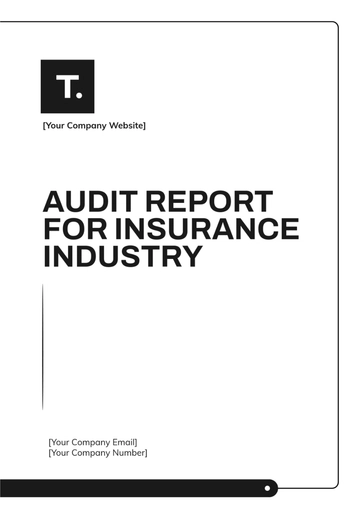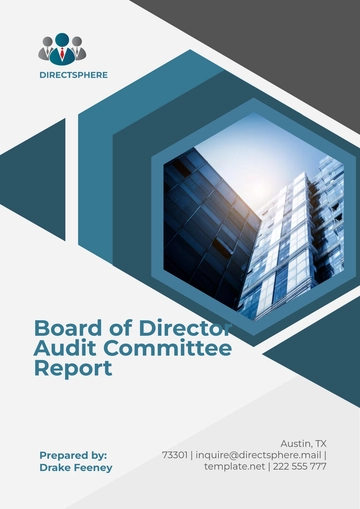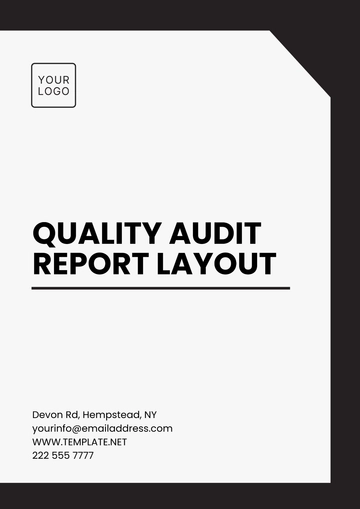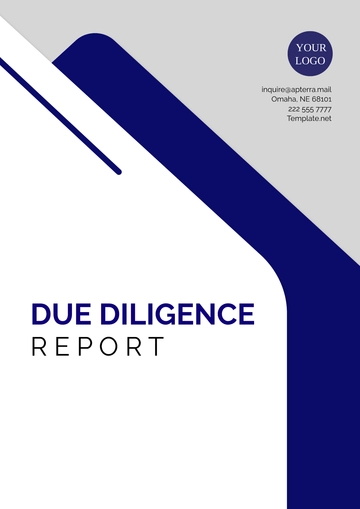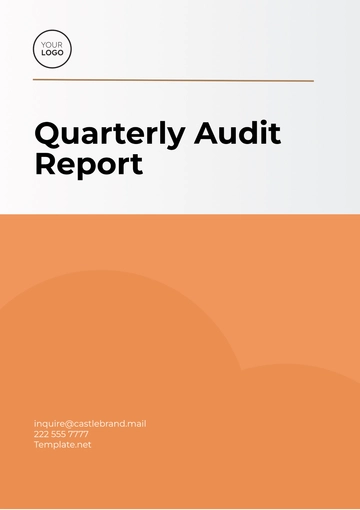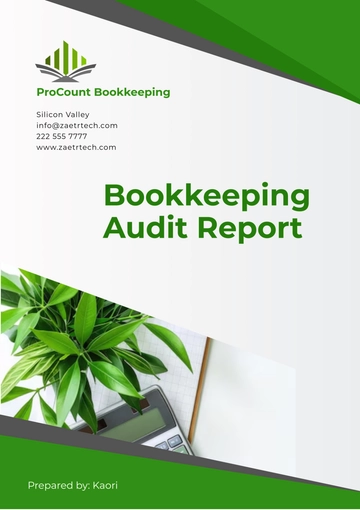Free Compliance Risk Audit Report
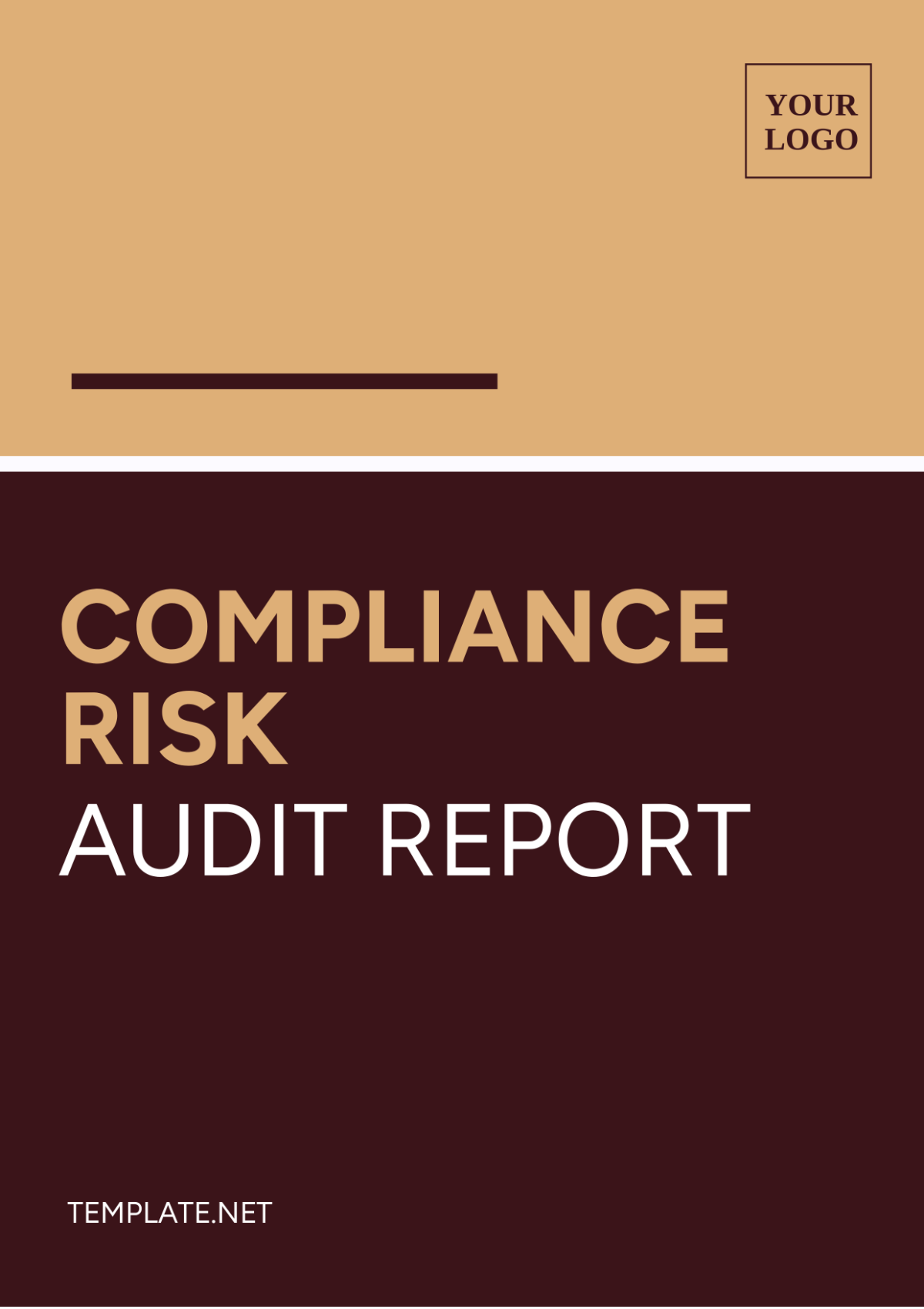
Organization Name: [Your Company Name]
Audit Date: [Enter Audit Date]
Audit Team: [List Audit Team Members]
I. Executive Summary
The audit, conducted from [Audit Start Date] to [Audit End Date], aimed to identify and prioritize compliance risks within the organization.
The organization's compliance framework was reviewed, revealing strengths and areas for improvement.
Key findings include:
Identified [Number] high-risk compliance areas.
[Percentage]% of current compliance processes were found to be effective.
[Number] areas were identified for immediate improvement.
Recommendations are provided to enhance compliance processes and procedures.
II. Introduction
[Your Company Name] is committed to compliance and risk management to ensure operational effectiveness and regulatory adherence.
This audit seeks to identify and prioritize compliance risks to enhance the organization's compliance program.
Objectives include assessing the effectiveness of current compliance processes and providing recommendations for improvement.
III. Compliance Risk Identification
Compliance risks identified include:
Lack of employee training on compliance policies.
Inadequate monitoring of compliance with regulatory requirements.
Insufficient documentation of compliance activities.
Risks were assessed based on likelihood and impact, with high-risk areas prioritized for immediate attention.
The prioritization process involved reviewing historical compliance data and consulting with subject matter experts.
IV. Compliance Process and Procedure Review
Current compliance processes and procedures were reviewed, focusing on:
Employee training programs.
Monitoring and reporting mechanisms.
Documentation practices.
Effectiveness was evaluated based on compliance with regulatory requirements and internal policies.
Areas for improvement include:
Enhancing employee training programs.
Implementing automated monitoring tools.
Improving documentation practices.
V. Regulatory Compliance Demonstration
Evidence of compliance with regulatory requirements was provided for:
GDPR (General Data Protection Regulation): Provide documentation of data protection policies, data processing agreements, and records of data breaches.
HIPAA (Health Insurance Portability and Accountability Act): Provide documentation of patient data protection measures, including access controls and data encryption.
Non-compliance issues were identified in:
Lack of data protection policies and procedures.
Inadequate access controls for patient data.
Corrective actions recommended include:
Developing and implementing data protection policies and procedures.
Implementing access controls and data encryption measures.
VI. Recommendations
Develop and implement a comprehensive compliance training program.
Enhance monitoring and reporting mechanisms to ensure timely identification of compliance issues.
Conduct regular audits and assessments to assess compliance status and effectiveness of controls.
VII. Conclusion
The audit has identified key areas for improvement in the organization's compliance program.
Recommendations are provided to enhance compliance processes and procedures.
Continuous monitoring and improvement are essential to ensure ongoing compliance with regulatory requirements.
VIII. Signatures:

Audit Team Leader: [Your Name]
Date: [Date Signed]
- 100% Customizable, free editor
- Access 1 Million+ Templates, photo’s & graphics
- Download or share as a template
- Click and replace photos, graphics, text, backgrounds
- Resize, crop, AI write & more
- Access advanced editor
Our Compliance Risk Audit Report Template is essential for assessing and managing compliance risks. This customizable document covers risk assessment criteria, audit findings, recommendations, and more. Downloadable and printable, it ensures thorough risk assessment and mitigation. Edit it effortlessly in our AI Editor Tool to meet your specific audit needs and enhance compliance efforts.
You may also like
- Sales Report
- Daily Report
- Project Report
- Business Report
- Weekly Report
- Incident Report
- Annual Report
- Report Layout
- Report Design
- Progress Report
- Marketing Report
- Company Report
- Monthly Report
- Audit Report
- Status Report
- School Report
- Reports Hr
- Management Report
- Project Status Report
- Handover Report
- Health And Safety Report
- Restaurant Report
- Construction Report
- Research Report
- Evaluation Report
- Investigation Report
- Employee Report
- Advertising Report
- Weekly Status Report
- Project Management Report
- Finance Report
- Service Report
- Technical Report
- Meeting Report
- Quarterly Report
- Inspection Report
- Medical Report
- Test Report
- Summary Report
- Inventory Report
- Valuation Report
- Operations Report
- Payroll Report
- Training Report
- Job Report
- Case Report
- Performance Report
- Board Report
- Internal Audit Report
- Student Report
- Monthly Management Report
- Small Business Report
- Accident Report
- Call Center Report
- Activity Report
- IT and Software Report
- Internship Report
- Visit Report
- Product Report
- Book Report
- Property Report
- Recruitment Report
- University Report
- Event Report
- SEO Report
- Conference Report
- Narrative Report
- Nursing Home Report
- Preschool Report
- Call Report
- Customer Report
- Employee Incident Report
- Accomplishment Report
- Social Media Report
- Work From Home Report
- Security Report
- Damage Report
- Quality Report
- Internal Report
- Nurse Report
- Real Estate Report
- Hotel Report
- Equipment Report
- Credit Report
- Field Report
- Non Profit Report
- Maintenance Report
- News Report
- Survey Report
- Executive Report
- Law Firm Report
- Advertising Agency Report
- Interior Design Report
- Travel Agency Report
- Stock Report
- Salon Report
- Bug Report
- Workplace Report
- Action Report
- Investor Report
- Cleaning Services Report
- Consulting Report
- Freelancer Report
- Site Visit Report
- Trip Report
- Classroom Observation Report
- Vehicle Report
- Final Report
- Software Report

